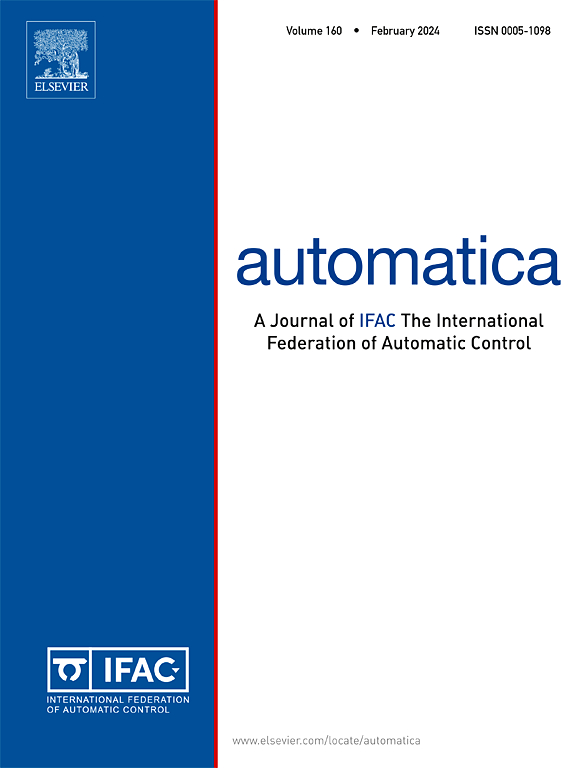基于深度学习的 KKL 链式观测器,用于具有时变输出延迟的离散时间非线性系统
IF 4.8
2区 计算机科学
Q1 AUTOMATION & CONTROL SYSTEMS
引用次数: 0
摘要
本文针对输出受时变测量延迟影响的离散时间非线性系统提出了一种 Kazantzis-Kravaris-Luenberger (KKL) 观察器设计方法。依靠注入式状态变换,在潜坐标中设计了一连串观测器,通过原坐标中的逆映射保证了指数稳定性。此外,还推导出了子预测器数量与延迟下限和上限之间的关系。设计 KKL 观察器所涉及的变换是通过一种基于神经网络的无监督学习方法确定的。我们还分别介绍了针对测量噪声和神经网络近似误差的干扰抑制和鲁棒性分析。最后,我们通过数值模拟说明了所提出的基于学习设计的 KKL 链观测器的性能和鲁棒性。本文章由计算机程序翻译,如有差异,请以英文原文为准。
Deep-learning based KKL chain observer for discrete-time nonlinear systems with time-varying output delay
This paper proposes a Kazantzis–Kravaris–Luenberger (KKL) observer design for discrete-time nonlinear systems whose output is affected by a time-varying measurement delay. Relying on an injective state transformation, a chain of observers is designed in the latent coordinates with exponential stability guarantees through the inverse map in the original coordinates. Moreover, the relationship between the number of sub-predictors and the lower and upper bounds of the delay is derived. The transformations involved in the design of the KKL observer are identified using an unsupervised learning-based approach that relies on neural networks. A disturbance rejection and robustness analysis against measurement noise and neural network approximation error are presented, respectively. Finally, we illustrate the performance and robustness of the proposed learning-based design KKL chain observer through numerical simulations.
求助全文
通过发布文献求助,成功后即可免费获取论文全文。
去求助
来源期刊

Automatica
工程技术-工程:电子与电气
CiteScore
10.70
自引率
7.80%
发文量
617
审稿时长
5 months
期刊介绍:
Automatica is a leading archival publication in the field of systems and control. The field encompasses today a broad set of areas and topics, and is thriving not only within itself but also in terms of its impact on other fields, such as communications, computers, biology, energy and economics. Since its inception in 1963, Automatica has kept abreast with the evolution of the field over the years, and has emerged as a leading publication driving the trends in the field.
After being founded in 1963, Automatica became a journal of the International Federation of Automatic Control (IFAC) in 1969. It features a characteristic blend of theoretical and applied papers of archival, lasting value, reporting cutting edge research results by authors across the globe. It features articles in distinct categories, including regular, brief and survey papers, technical communiqués, correspondence items, as well as reviews on published books of interest to the readership. It occasionally publishes special issues on emerging new topics or established mature topics of interest to a broad audience.
Automatica solicits original high-quality contributions in all the categories listed above, and in all areas of systems and control interpreted in a broad sense and evolving constantly. They may be submitted directly to a subject editor or to the Editor-in-Chief if not sure about the subject area. Editorial procedures in place assure careful, fair, and prompt handling of all submitted articles. Accepted papers appear in the journal in the shortest time feasible given production time constraints.
 求助内容:
求助内容: 应助结果提醒方式:
应助结果提醒方式:


